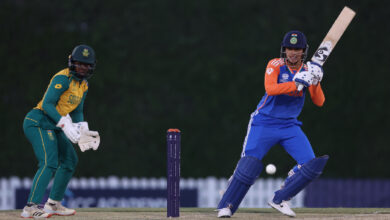When Susan Polgar helped Bob Fischer finalise rules Freestyle Chess

Bob Fischer and Susan Polgar, two of the most iconic figures of chess, might remember Budapest differently.But speaking about her just-released book, Rebel Queen, to chess.com, the eldest Polgar genius recounted how Fischer brainstormed with her on his initial ideas on the revolutionary format, even as Freestyle Chess, known essentially as Fischer Random or Chess960 came into being.
Susan Polgar’s memoir delves into several topics, but hitherto little known was how she persuaded Fischer, back then in hiding from American agencies after the Boris Spassky rematch, to move to Budapest.
Story continues below this ad
Susan told chess.com, “That was quite fascinating that after his match, he was kind of in hiding in a little town just across the Hungarian-Yugoslav border. And to my biggest surprise, at one moment when I happened to be in Peru, as I later learned, one of our mutual friends reached out to my family to come to visit. And my parents and my sers went to visit, and the meeting went well, but he was complaining about how I didn’t join them.”
When she got to know he was keen on meeting the pioneer, and she had returned in May 1993, Susan was thrilled that the legendary Bob Fischer wanted to meet her. Though nobody knew where exactly he was in hiding, Susan would drive out to Yugoslavia, and the two chess whizzes would hit it off well. “He was already fascinated Fischer Random, and we played our very first game in Fischer Random there,” she told chess.com.
“Seeing how he was living at the time in this small hotel room, I was just throwing up the idea that “Why don’t you move to Budapest, you know, you’d have a lot more things to do. Because we have plenty of nice restaurants, cinemas, spas, you know, I would be happy to help you around. Especially in the beginning, you may have other friends like Pal Benko or Lajos Portisch,” chess.com quoted Polgar as saying.
She would narrate that he was intrigued vthe idea, and asked her, “Do you think I could?” “And obviously implying that he was going against the U.S. government, and Interpol was perhaps looking for him.” The rematch with Spassky was not to the liking of the American establishment, though Spassky and Fischer loved dusting off their brains, and playing again.Story continues below this ad
Polgar would test the waters at border control in a hilarious way. “So when I was driving back from that first visit to Yugoslavia, meeting him, on the border, I asked the border control guy, “What would happen if I had a gentleman the name Robert James Fisher sitting with me in the car?” And he looked at me, not understanding the question, “What would there be? Does he have a valid passport?” I said, “Yes, he does.” “Well, then what would be? He would go across the border with you. Nothing would happen,” she told chess.com.
She would send a message to the mutual friend, and Fischer would pack up and move to Budapest along with his bodyguard and Eugene Torre, who had been his companion for some time back in those days. “And he stayed in Budapest for around eight years,” she recalled.
In those early weeks and months, she saw him nearly every day, showed him around. She would recall to chess.com, “We had countless dinners. And along those ways, those dinners and conversations, we discussed in great detail and experimented with Fischer Random, which eventually turned out to be Chess960.”
In those meetings, the freestyle format would be tweaked. “I helped him finalise the rules, which initially were quite different from what people play today, in that first, only the eight pawns would be on the board. And then the mandatory first eight moves of the game would be to set all the pieces up one one, not necessarily symmetrically. And only after that, the game, the moves, as we know them in traditional chess, would start. And so we played many games and debated, discussed, you know, should there be bishops on opposite colors squares starting, should castling be allowed, and long story short, after many games we concluded that maybe it would be more harmony to the game to maintain as much as possible of the rules of traditional chess.”Story continues below this ad
Polgar recalled Fischer then reached out to mathematicians trying to find out how many starting positions would there be possible if the starting positions wwre restricted to having bishops on opposite color squares as starting positions, the kings in between the rooks, as well, and maintaining the rights to castle, as well as making sure the pieces are set up symmetrically as well. “So, as we learned at the time, it turned out to be that there are still 960 different starting positions possible. And since the whole purpose of trying to create this chess variant was to eliminate the opening theories that have been developed, even the early 90s to his opinion, far too much and taking away too much of the essence of chess, as of two intellectuals trying to outsmart each other or out-strategize each other, he was happy and content that there is no way any human can analyze all 960 starting positions, let alone remember those analyses,” she told chess.com.
Susan Polgar herself took deep interest in endgames, not too fussed over openings. But back then with Fischer in Budapest, Chess960 crystallised.
“And I’m personally very happy that today there are very significant efforts and tournaments being played with exactly the rules that Bob and I settled on back in around 1993-94. I think it’s a great alternative to traditional chess as we know it,” she told chess.com.







